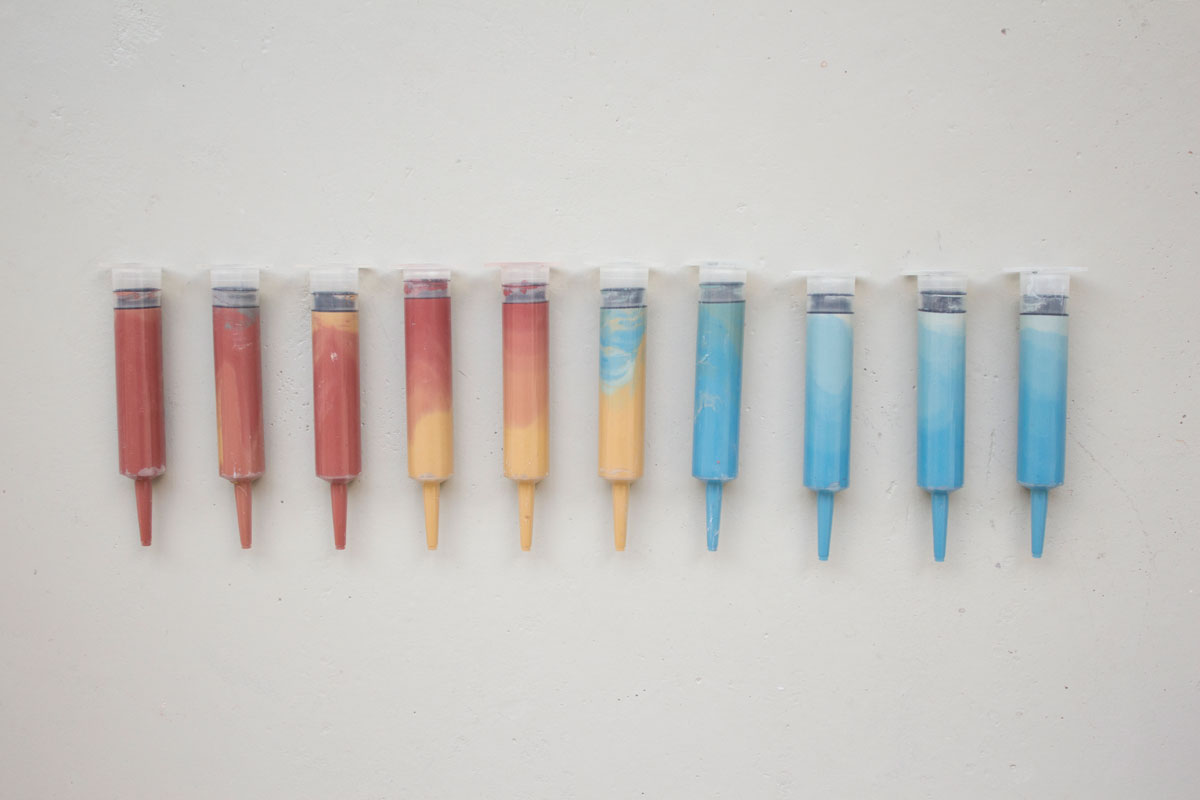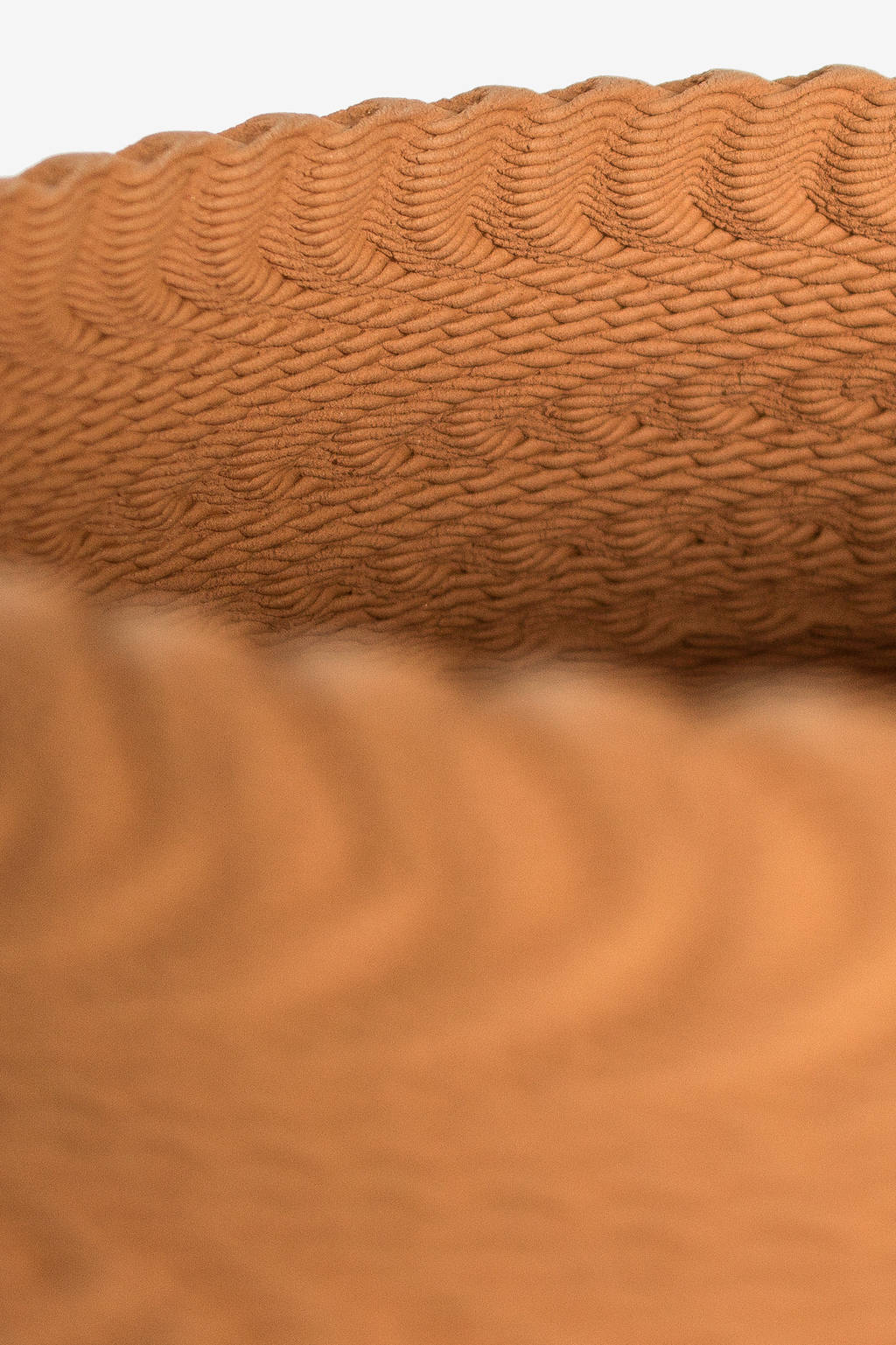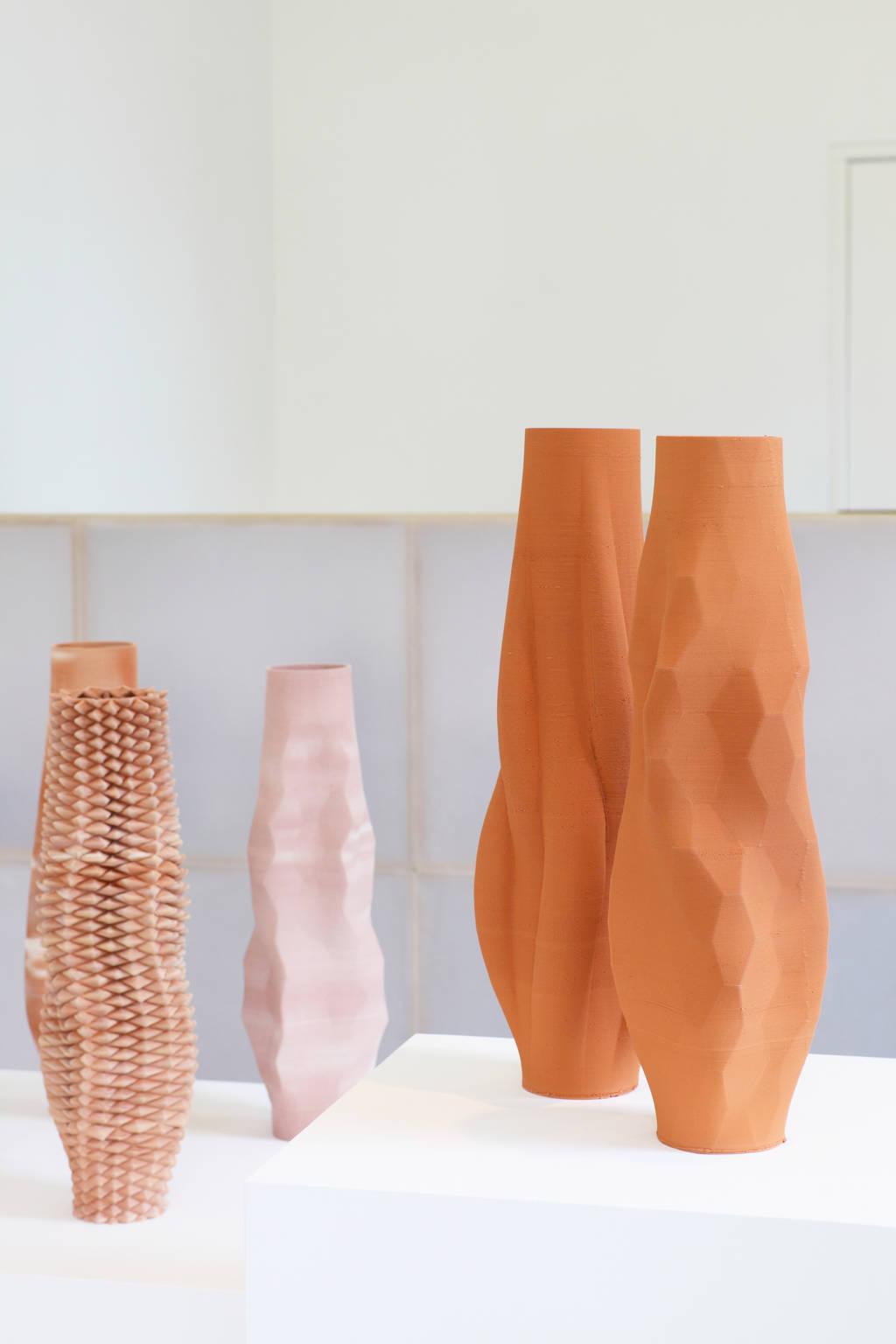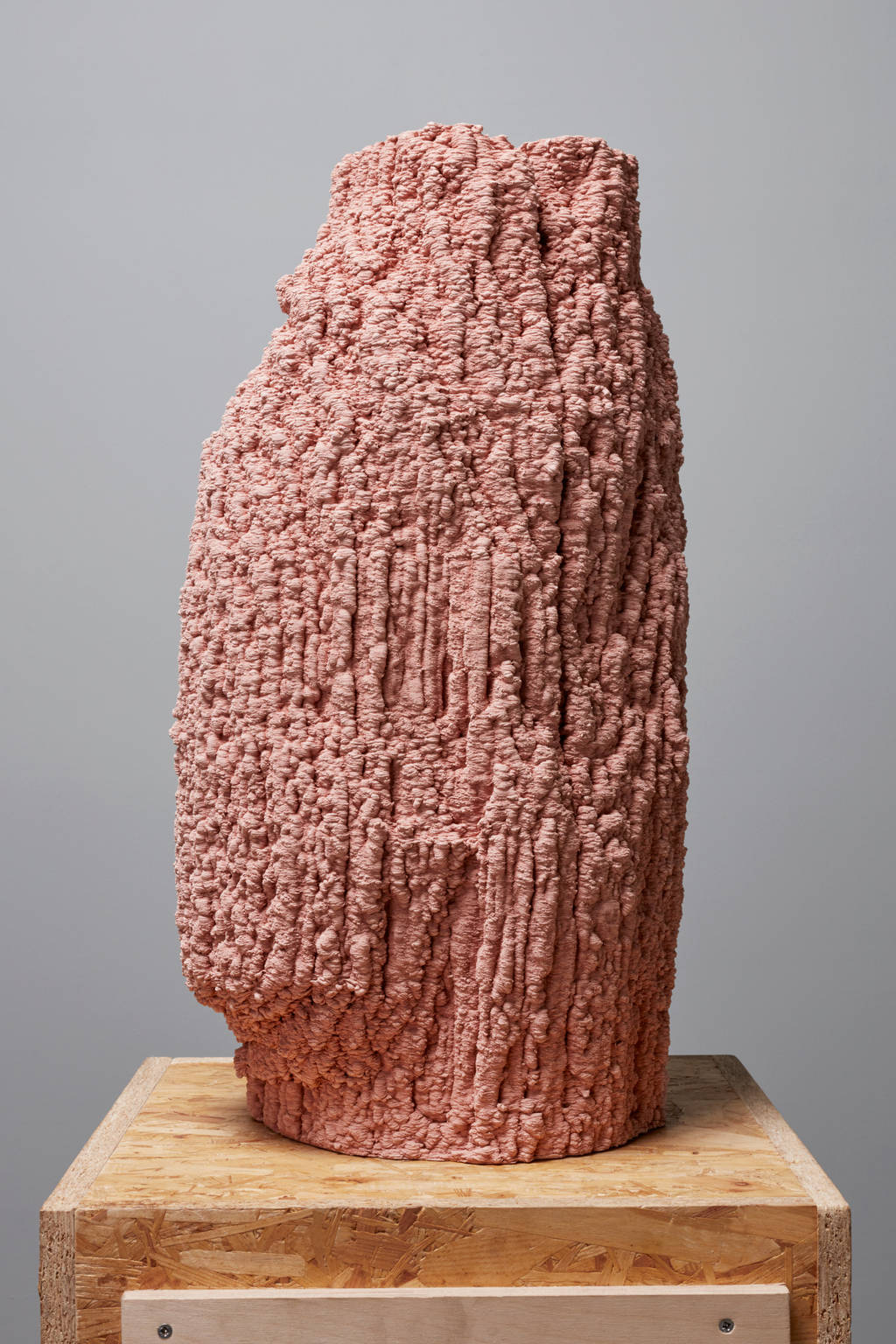Woven
My interest in 3D printing was guided by the possibilities and limitations of the technology. 3D printing lets one manufacture many different forms, textures and colors that otherwise would not be possible. By developing a 3D printing process for a more noble and beautiful material, ceramics I was able to make these fragile and fine objects.
While 3D printing has many advantages it also limits you. The technology is meant to be quick, repeatable and precise. The forms may differ but each time the machine repeats the same action, extruding layer after layer. Repeating itself until an idea becomes a thing. Random factors are excluded. When making a 3D printer or developing a 3D printing process, increasing the level of repeatability and precision is key. But this also means that 3D printing sometimes feels rather “kil.” Kil is a Dutch word meaning cold, clinical, without feeling, an absence of humanity to some extent.
By making these machines that make, we push the human to the background and place the machine front and center. Paradoxically 3D printing lets more people make but simultaneously removes them from the process. We often don’t touch an object before it is done.
By introducing elements of randomness I wanted to reintroduce error, a human touch, stochasticity. I felt that the process craved some serendipity, joy through intentional failure. I wanted repeatability and precision but found I also needed mistakes.





















